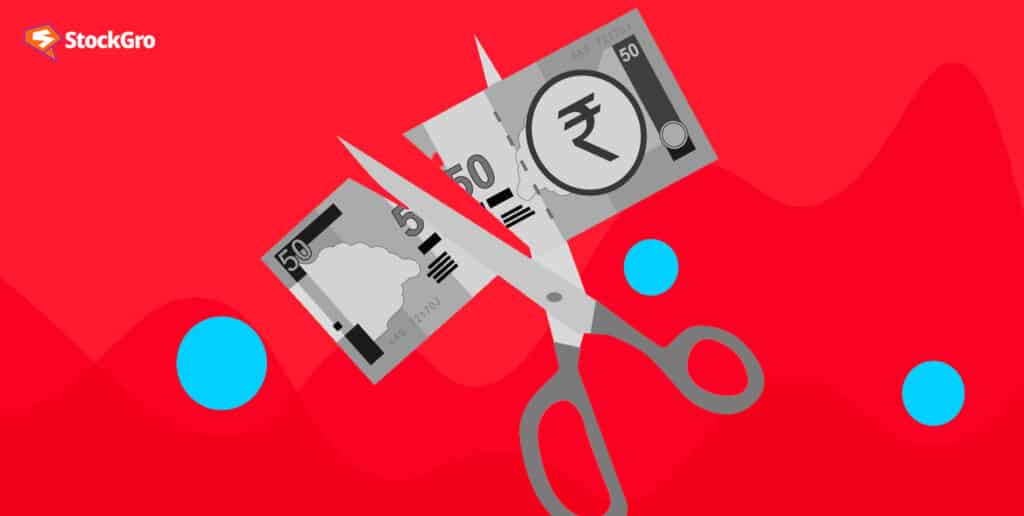
The term ‘haircut’ might bring to mind a trip to the barbershop, but haircut meaning in finance signifies a different kind of cutback. So, what is a haircut in finance? It refers to the reduction of value but in two distinct scenarios: collateral valuation and debt restructuring.
The first type occurs when a lender lowers the appraised value of an asset used as loan security, safeguarding against potential losses. The second type is when a lender accepts less than the owed amount on a non-performing loan to cut their losses. This brief guide aims to simplify these concepts to enhance your financial literacy.
You may also like: Navigating the legal maze: The consequences of personal loan default
Haircut on collateral
One of the types of haircuts in finance is based on collateral. Collateralisation is a way of securing a loan by using an asset as security for the lender in the event that you are unable to repay the loan. Still, there’s always a chance the asset will lose value.
This is where the concept of haircut comes in. It essentially refers to the practice of reducing the market value of an asset when it’s used as security for a loan.
If you are looking to borrow a sum of money and offer your asset as collateral, the lender will assess the market value of the asset. However, they won’t lend you the full amount of this value. Instead, they apply a haircut, meaning they will offer you a loan based on a percentage of the asset’s value. This percentage is less than 100%.
For example, you want to borrow ₹80 lakh and offer your property as collateral. If your property is valued at ₹1 crore, the lender might only be willing to offer a loan amounting to 70% of its value, which is ₹70 lakh. This means a 30% haircut has been applied.
The reason behind this is risk management. The haircut provides a cushion for the lender against potential declines in the property’s value, ensuring that if the borrower defaults and the property needs to be sold, the lender can still recover the loan amount without incurring losses.
The size of the haircut varies depending on several factors: the type of asset, its liquidity meaning how easily it can be sold, the borrower’s creditworthiness, and the lender’s risk tolerance. Typically, more liquid and stable assets, such as government bonds, come with smaller haircuts. Conversely, less liquid and more volatile assets, like real estate, attract larger haircuts.
It’s important to understand that the haircut doesn’t alter the actual value of your asset. It merely determines the portion of its value that the lender considers when providing the loan. This concept ensures that lenders can manage their risks effectively while borrowers get access to funds by leveraging their assets.
You may also like: Unsecured loans: How does it impact the borrower?
Haircut in debt restructuring
The term “haircut” takes on a different meaning when it comes to debt restructuring. This process comes into play when a borrower finds themselves unable to make the full payments owed on a loan. Essentially, a haircut in this context means the lender agrees to accept a lesser amount than what is originally due to them, allowing the loan to be closed under these new terms.
Let’s consider a haircut in a finance example; say, a borrower owes ₹1,00,000 and is unable to repay the entire amount within the specified period. Next, debt restructuring is pursued. This refers to the procedure wherein the conditions of existing debt are renegotiated. Hence, through renegotiations, they may agree with the lender to pay back only ₹80,000. Here, the lender has taken a haircut of 20%, reducing the borrower’s debt obligation.
This approach is particularly common in corporate and business loans and is often utilised as part of the corporate insolvency process. The goal is to prevent companies from going into liquidation, thus preserving not only the business but also the wider economic stability.
In India, several insolvency cases under the Indian Insolvency & Bankruptcy Code have seen successful resolutions after creditors agreed to significant haircuts. One such case in 2021 is Videocon, where the creditors agreed to a 96% haircut.
Haircuts in debt restructuring offer a lifeline to borrowers in financial distress, and a second opportunity at stability. For lenders, while accepting a haircut means a loss compared to the original loan amount, it’s often a more favourable outcome than dealing with a complete default, which could result in even greater losses.
Although this process provides a way out for both parties, it may not address the underlying causes of the financial difficulty and may have an effect on the borrower’s rating. Nevertheless, because it prevents the worst-case situation of default, it continues to be an essential tool in the overall economy, providing a compromise that is advantageous to both lenders and borrowers.
Also read: NPA: The tipping point in banking and economy
Bottomline
The concept of a haircut in finance, whether applied to collateral valuation or debt restructuring, serves as a critical mechanism for managing risk and facilitating financial stability. Ultimately, these financial strategies help preserve economic integrity, offering a pathway to resolve financial challenges while minimising potential losses for all parties involved.

